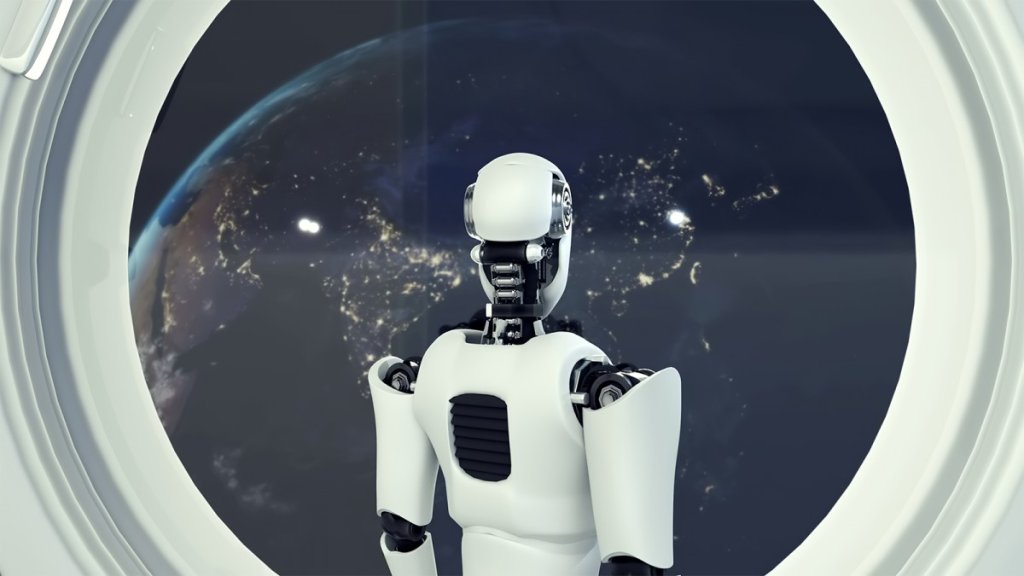The Role of Robotics in Space Exploration

Dawn Mission
The Dawn spacecraft, launched by NASA, was designed to study the two largest objects in the asteroid belt: Vesta and Ceres. Dawn’s mission provided valuable data on these celestial bodies, helping scientists understand their composition and the early solar system’s formation.
Curiosity Rover
The Curiosity rover, part of NASA’s Mars Science Laboratory mission, has been exploring the surface of Mars since 2012. Equipped with advanced scientific instruments, Curiosity has analyzed Martian soil, rock samples, and the atmosphere, searching for signs of past water and potential habitability.
Opportunity Rover
The Opportunity rover, also known as MER-B, explored Mars from 2004 to 2019. It conducted extensive geological surveys, discovering evidence of ancient water flows and providing insights into Mars’ past climate and geology.
Perseverance Rover
The Perseverance rover, which landed on Mars in February 2021, aims to search for signs of ancient microbial life and collect samples for future return missions. Equipped with advanced technology, Perseverance is also testing new techniques for producing oxygen from the Martian atmosphere.
Voyager Probes
The Voyager 1 and Voyager 2 spacecraft were launched in 1977 to explore the outer planets of our solar system. They provided groundbreaking data on Jupiter, Saturn, Uranus, and Neptune, and are now traveling through interstellar space, continuing to send back valuable information.
Cassini-Huygens Mission
The Cassini spacecraft, in orbit around Saturn, provided detailed information about the planet’s rings, moons, and atmosphere. The Huygens probe, part of the mission, landed on Titan, Saturn’s largest moon, offering insights into its surface and atmospheric conditions.
New Horizons Mission
The New Horizons spacecraft conducted a flyby of Pluto in 2015, sending back detailed images and data of the dwarf planet and its moons. The mission continued to explore the Kuiper Belt, providing valuable information about this distant region of the solar system.
Juno Mission
The Juno spacecraft has been orbiting Jupiter since 2016, studying its atmosphere, magnetic field, and internal structure. Juno’s observations are helping scientists understand the formation and evolution of Jupiter and the early solar system.
Rosetta Mission
The Rosetta spacecraft, operated by the European Space Agency, rendezvoused with the comet 67P/Churyumov-Gerasimenko in 2014. Rosetta’s mission included deploying the Philae lander to the comet’s surface, providing unique insights into cometary composition and behavior.
Insight Mission
NASA’s InSight mission, which landed on Mars in 2018, is focused on studying the planet’s interior. InSight’s instruments measure seismic activity, heat flow, and planetary structure, providing valuable data on Mars’ geology and seismic activity.
Hubble Space Telescope’s Robotic Servicing Missions
Robotic servicing missions to the Hubble Space Telescope have extended its operational life and capabilities. These missions included upgrading instruments and repairing components, ensuring Hubble’s continued contribution to astronomical research.
Artemis Program
The Artemis program aims to return humans to the Moon and establish a sustainable presence. The program will use robotic landers and rovers to explore the lunar surface, conduct scientific research, and test new technologies for future missions to Mars and beyond.
Lunar Reconnaissance Orbiter
The Lunar Reconnaissance Orbiter (LRO) has been mapping the Moon’s surface since 2009. It provides high-resolution images and data on lunar topography, composition, and potential landing sites for future missions.
Mars Reconnaissance Orbiter
The Mars Reconnaissance Orbiter (MRO) has been studying Mars since 2006, providing detailed images and data on the planet’s surface, climate, and geology. MRO’s observations support current and future Mars missions by identifying landing sites and potential areas of interest.
ExoMars Mission
The ExoMars mission, a collaboration between ESA and Roscosmos, aims to search for signs of past life on Mars. The mission includes a rover equipped with scientific instruments to analyze Martian soil and search for organic molecules.
Asteroid Redirect Mission
The Asteroid Redirect Mission, although canceled, was designed to capture and redirect a small asteroid into lunar orbit for detailed study. The mission would have provided insights into asteroid composition and potential resources for future space exploration.
Gaia Space Observatory’s Robotic Observations
The Gaia Space Observatory uses robotic technology to conduct its stellar surveys. The spacecraft’s precise measurements of star positions and motions contribute to our understanding of the Milky Way’s structure and evolution.
Solar Probe Plus Mission
The Solar Probe Plus mission, now known as the Parker Solar Probe, is studying the Sun’s outer atmosphere, or corona. The spacecraft’s close approach to the Sun provides valuable data on solar wind, magnetic fields, and solar activity.
Dragonfly Mission
NASA’s Dragonfly mission aims to explore Titan, Saturn’s largest moon, using a drone-like rotorcraft. The mission will search for signs of prebiotic chemistry and assess Titan’s potential for supporting life.
Lunar Gateway
The Lunar Gateway is an international space station that will orbit the Moon. It will serve as a staging point for lunar exploration and a platform for scientific research, supporting future missions to the Moon and Mars.
BEAM Module
The Bigelow Expandable Activity Module (BEAM) is an inflatable habitat attached to the International Space Station (ISS). BEAM provides insights into expandable habitat technology, which could be used in future space missions and long-duration stays.
CubeSat Missions
CubeSats are small, cost-effective satellites used for a variety of space missions. These miniature spacecraft are employed for scientific research, technology demonstrations, and educational purposes, expanding our ability to explore space.
Robotic Arm of the ISS
The International Space Station (ISS) is equipped with a robotic arm, known as Canadarm2which assists with docking spacecraft, capturing experiments, and performing maintenance tasks. The arm is a crucial component in the ISS’s operations and mission support.
Potential of Autonomous Spacecraft
Autonomous spacecraft are increasingly being used in space exploration. These vehicles can perform complex tasks and make decisions independently, enhancing mission capabilities and enabling more ambitious exploration objectives.
Legacy of Robotic Space Missions
Robotic space missions have paved the way for human exploration by providing critical data, testing technologies, and conducting experiments in space. Their legacy continues to impact our understanding of the universe and the future of space exploration.